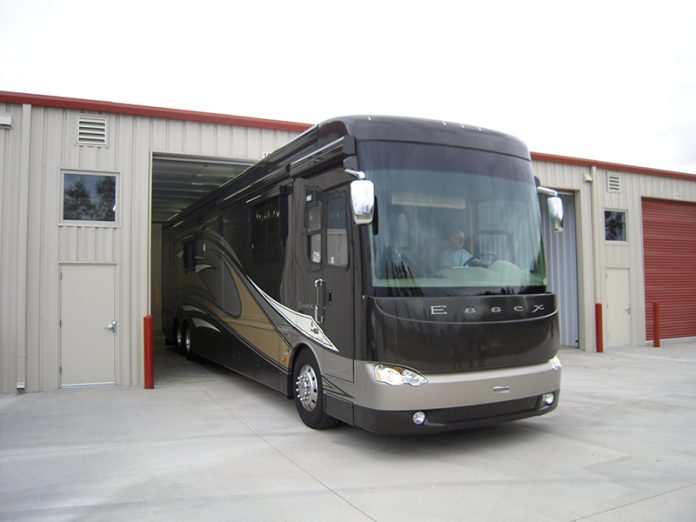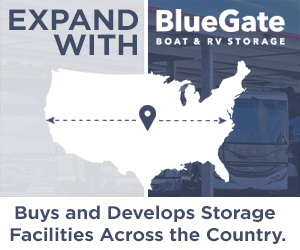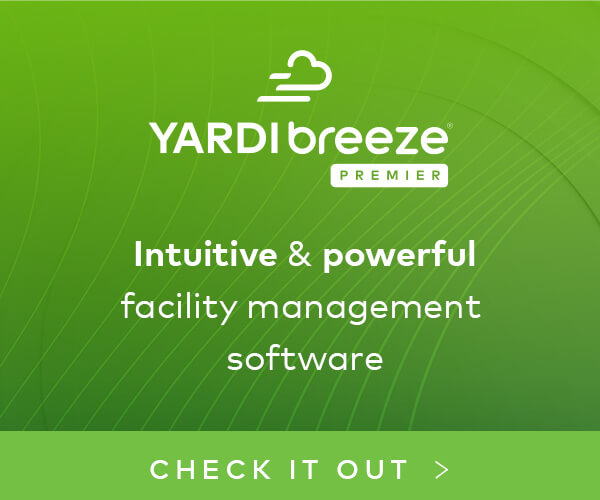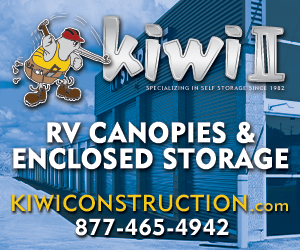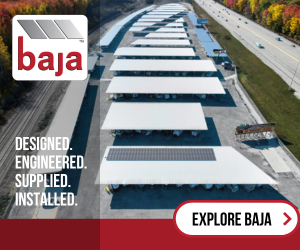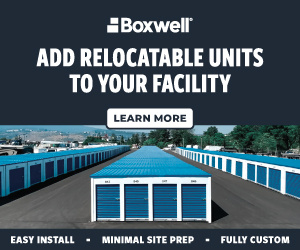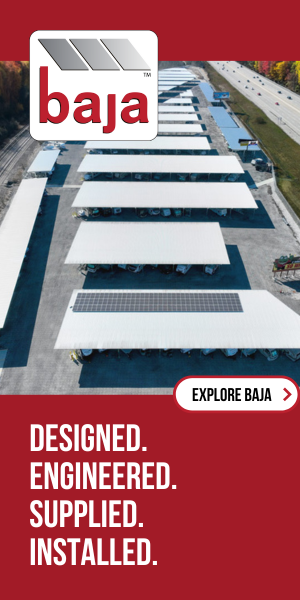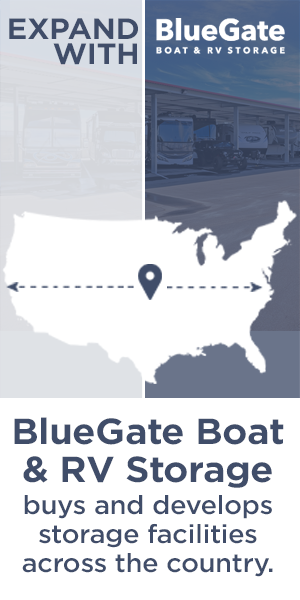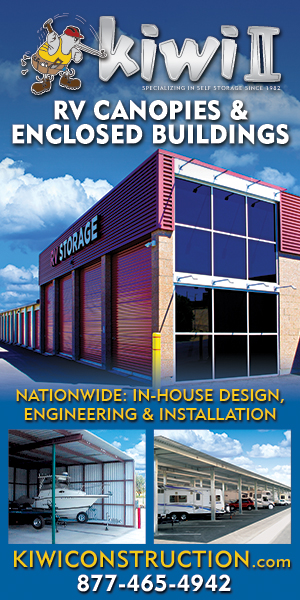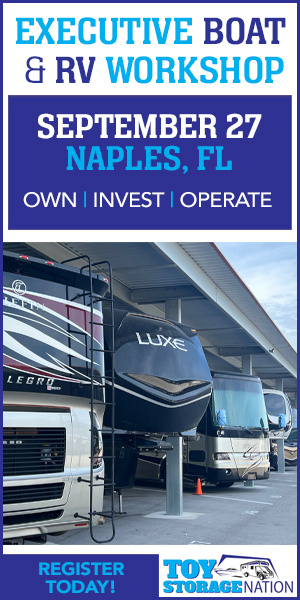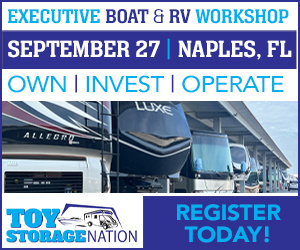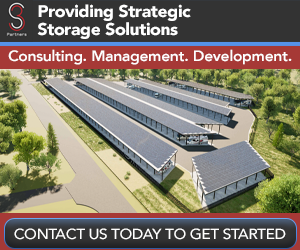Author Bio
Shannon Marshall is the CEO of BETCO Buildings. Since its founding in 1984, BETCO has designed, manufactured, and built custom self-storage structures across the globe. To learn more, visit www.betcoinc.com or email smarshall@betcoinc.com.
As RV and boat sales continue to rise, so does the demand for RV and boat storage. It’s no secret that summer and fall are the hot times to purchase and use RVs and boats. Parents take their kids on memory-building vacations, couples want to get out of the house and explore, and retirees take advantage of the great weather and their ability to travel freely. However, purchasing a boat or RV is only one piece of the puzzle. Buyers must also consider where to store their recreational vehicles when not in use. In addition to CCR and HOA restrictions, in many cases people simply don’t have the extra room on their property, nor do owners want to leave their investment in the elements to be exposed to damaging UV rays, hail, sleet, snow, and rain. For this reason, there is a growing need for RV and boat storage.
According to RVIA, RV shipments for 2021 ended with a record 600,240 wholesale shipments, surpassing the previous 2017 record by 19%—and the growth is expected to continue. If you’re thinking about capitalizing on the rapid growth of the RV industry by building or converting space into RV storage, there are several important items to consider before you begin. The biggest questions to answer are: what type of boat and RV storage would work best in your market and how to adequately secure that space to ensure future tenants have a hassle-free experience storing their motorized toys.
Boat and RV Storage: Build for Success
For many, building or converting space into boat and RV storage is an incredibly attractive real estate opportunity because RV and boat storage is both a niche within the larger self-storage industry and RV sales represent a growing, high-demand sector of the leisure and tourism market. While building RV storage may seem like a no-brainer, the average rent per square foot is substantially lower for RV storage than conventional self-storage. That’s why it’s critical to determine what type of structure to build as well as what value-add services or amenities are the most appealing to the market in which you plan to build.
1. Outdoor, Uncovered (C-)
To put this in real estate terms, uncovered, outdoor RV parking would be what we would consider a Class C property. Most of the outdoor, uncovered RV storage in the market today is more than 20 years old and located in less than desirable locations. Outdoor, uncovered RV storage is more susceptible to theft, vandalism, and generally draws the lowest rental rates in the market. As previously mentioned, RV storage draws much lower rental rates per square foot than traditional self-storage, so it’s important to maximize rates and minimize insurance claims as much as possible. With that in mind, building uncovered, outdoor RV storage is largely a thing of the past.
2. Outdoor, Canopy/Partially Covered (C+/B-)
One way to quickly move outdoor boat and RV storage from Class C to Class B is by covering spaces with premium metal canopies. Owners of existing outdoor, RV storage can quickly justify higher rental rates by retrofitting their spaces with metal awnings—with little disruption to the customer. While covered spaces do provide more of a weather barrier than outdoor, uncovered space, there are still many security and weather-based challenges with this style of RV storage. Canopies do little to protect vehicles from vandalism, vermin, theft, high winds, flooding, and the like.
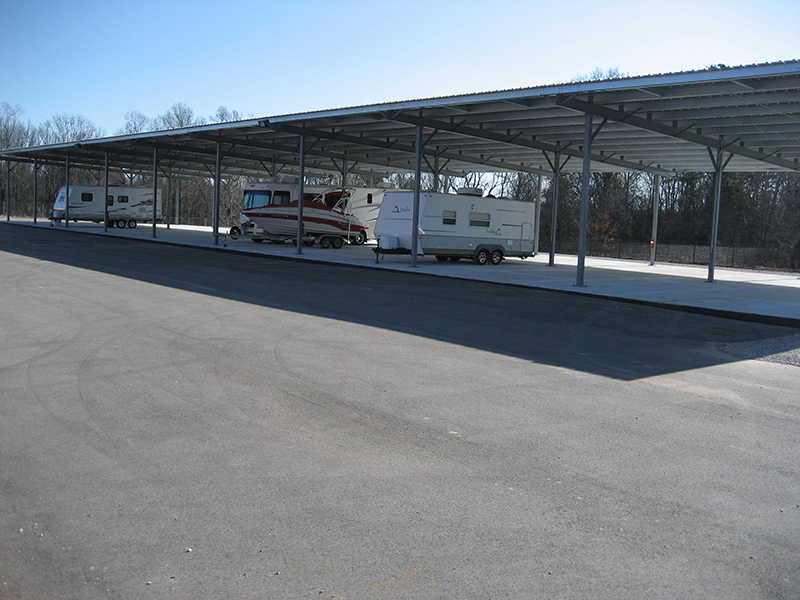
In most cases, RV storage spaces with awnings are not rated for hurricanes or other extreme weather conditions, but some municipalities require this type of protection for outdoor, RV storage. We rate canopies with a curve from C+ to B for these reasons.

Figure 2 Concrete Barrier Wall Around Canopy Covered, Paved Outdoor Storage
3. Interior Enclosed and Mixed Use
Moving into the world of Class A, interior, enclosed storage space is an increasingly popular option for self-storage owners who are converting a large existing structure to self-storage and are in a market with spare indoor RV and boat storage options. This option allows owners to optimize the majority of space with traditional storage units while diversifying with niche boat and RV space.
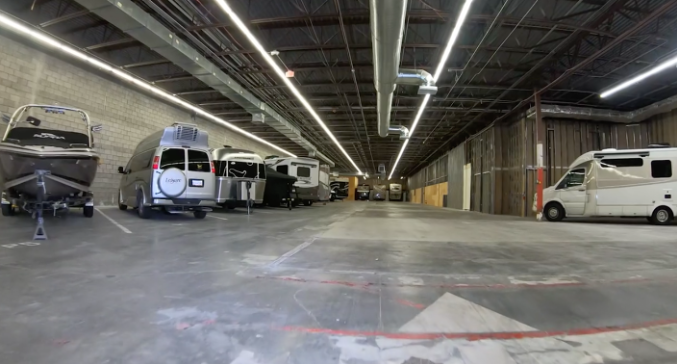
4. Fully Enclosed (A+)
If you’re looking for higher rental rates and fewer headaches, fully enclosed spaced secured by individual doors are the crème de la crème in RV and boat storage. Fully enclosed spaces traditionally draw substantially higher rental rates because they’re secured by physical barriers, minimizing the threat of weather damage, insects, and theft. Additionally, they provide storage customers with the easy accessibility of outdoor and canopy space but with the peace of mind of interior, enclosed units.
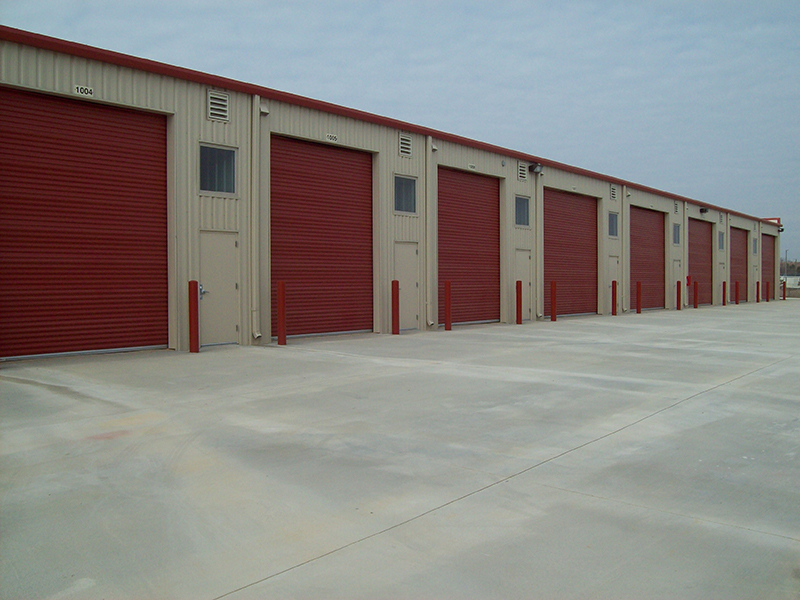
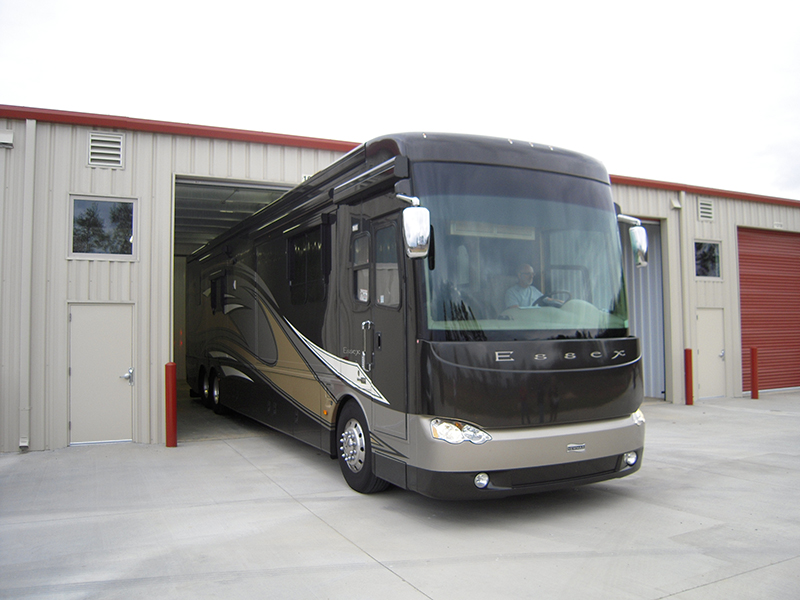
Balancing Security and Service
Despite all the changes in access control that we’ve seen in the past few years in the self-storage industry, very little has been done to tackle the herculean task of adequately securing boat and RV storage spaces. Security considerations for boat and RV storage are radically different than security considerations for traditional self-storage, and it’s important to consider how to properly secure your space during preconstruction planning. Here are a few considerations to take into account prior to breaking ground on an RV storage project:
- Boat and RV storage requires a tremendous amount of square footage, thus requiring security technology that can adequately surveille an incredibly large, often open, indoor or outdoor space.
- Because boat and RV storage spaces are so vast, it can be incredibly difficult to ensure that tenants or vandals are not living in vehicles.
- Many boat and RV storage areas are segmented by parking space and not secured by individual doors, thus making items like individual door alarms virtually obsolete.
- Boat and RV storage facilities have a huge target on their back; would-be criminals know that high-dollar items are being stored there with virtually no physical security.
- Because boats and RVs are traditionally very seasonally used items, it often takes several weeks or months for owners to know they’ve been burglarized or that theft has occurred.
While every project is unique and each will require a different array of security products and solutions, there are a few universal best practices when it comes to securing expensive, large vehicles. It’s important to strike a balance to provide both a convenient experience for your customers to access their pricey possessions and securing the space enough for them to feel comfortable leaving their high-dollar weekend toys at your facility.
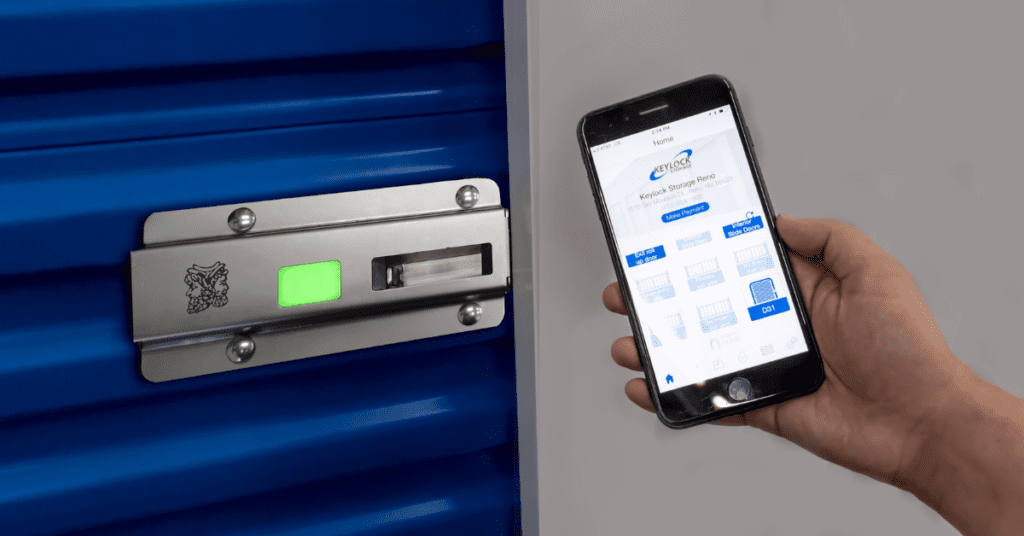
Best Practices
The single most important thing you can do to build for success and provide proper security is to build barriers. Simply put, physical barriers are the biggest deterrent against theft and vandalism when it comes to boat and RV storage. RV storage owners have a metaphorical bullseye on their back, especially in lower-income and high-crime areas. Trying to prevent break-ins and vehicle theft with chain link fencing, keypads, and padlocks is rarely enough. That’s why the physical barrier walls provided by interior storage and fully enclosed exterior units are the most secure option for RV storage. For owners of outdoor RV storage that are looking to “beef up” their security, consider adding magnetic concrete barrier pillars for additional after-hours security. These bollards get pricey, but so are the vehicles they’re designed to protect. With the average RV sticker price ranging from $10,000 to $300,000, magnetic concrete bollards are worth the investment to ensure that your tenants feel like their expensive possessions are safe.
Building physical barriers may seem costly, but nothing is more costly than the damage that could befall your RV storage facility’s reputation after even one high-value vehicle is damaged or stolen. We all understand the power of online reviews, and RV storage owners can expect a firestorm of local news coverage, outraged online reviews, and a massive uptick in move-outs after a vehicle goes missing.
Outside of building physical barriers, here are a few tips for building a more secure RV storage facility:
- In mixed use spaces, be sure to adequate zone access. Limiting tenant access to boat and RV storage space is a must.
- Prevent tailgating by securing enclosed, individual spaces with electronic locks rather than padlocks that can be easily cut.
- License plate cameras are a good way to record what vehicles come and go. However, in outdoor spaces where fences are easy to cut or jump, license plate cameras offer little assistance.
- Thermal cameras are a good way to detect after-hours trespassers. These won’t help you detect people living in their RV or other vehicle at your facility; thermal cameras have trouble detecting heat signatures through metal and concrete.
- You really cannot have too many motion sensors on property, but make sure they’re being actively monitored and reported.
- Active 24/7 security monitoring can go a long way to prevent theft.
- Proper lighting goes a long way as well.
The Customer Experience
There’s no doubt that boat and RV storage requires special security considerations; however, boat and RV customers often demand a higher level of customer service, conveniences, and value-add services. While RVs and boats are great on the open road and in the water, they’re fairly laborious when the day is done. Parking, hauling, attaching, and detaching these massive motor vehicles sounds about as fun as a root canal to most people. With that in mind, value-add conveniences like mobile access to the property/space, digital key sharing with family members, and app-based activity monitoring can take a bit of the sting out of the boat and RV storage process. Because of the ride height, most RV owners have to exit their vehicles to enter the property. While clickers can be a nice alternative, they’re also easy to lose, forget, or steal. Mobile app-based access to the property and space is a secure, trackable, and convenient solution for winterizing boats and RVs for the season.









